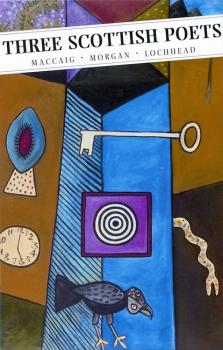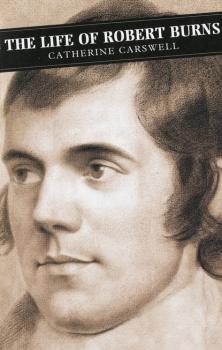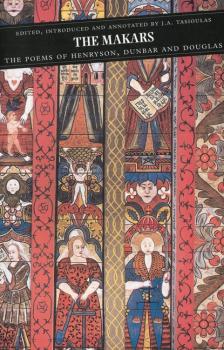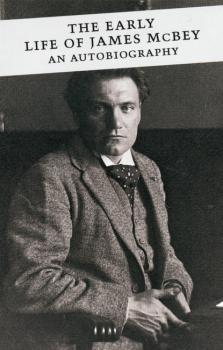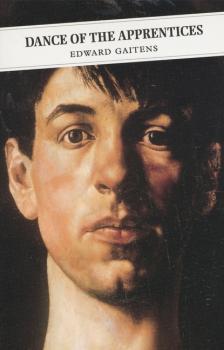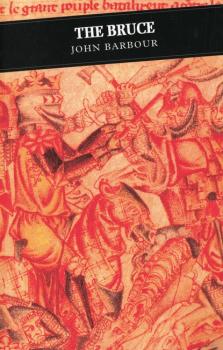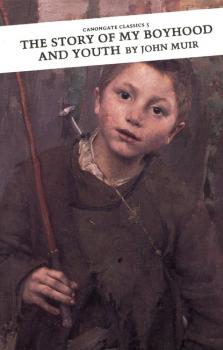ТОП просматриваемых книг сайта:
Canongate Classics
Скачать книги из серии Canongate ClassicsАннотация
Информация о книге
Автор произведения MacCaig Morgan Lochhead
Жанр Языкознание
Серия Canongate Classics
Аннотация
Introduced by Thomas Crawford.
First published in 1930 to an unprecedented storm of protest, Catherine Carswell's The Life of Robert Burns remains the standard work on its subject.
Carswell deliberately shakes the image of Burns as a romantic hero – exposing the sexual misdemeanours, drinking bouts and waywardness that other, more reverential, biographies choose to overlook.
Catherine Carswell's real achievement is to bring alive the personality of a great man: passionate, hard-living, generous, melancholic, morbid and triumphant . . . the very archetype of the supreme creative artist.
First published in 1930 to an unprecedented storm of protest, Catherine Carswell's The Life of Robert Burns remains the standard work on its subject.
Carswell deliberately shakes the image of Burns as a romantic hero – exposing the sexual misdemeanours, drinking bouts and waywardness that other, more reverential, biographies choose to overlook.
Catherine Carswell's real achievement is to bring alive the personality of a great man: passionate, hard-living, generous, melancholic, morbid and triumphant . . . the very archetype of the supreme creative artist.
Информация о книге
Автор произведения Catherine Carswell
Жанр Биографии и Мемуары
Серия Canongate Classics
Аннотация
Информация о книге
Автор произведения Jacqueline Tasioulas
Жанр Зарубежные стихи
Серия Canongate Classics
Аннотация
'Half Scotland sniggered and the other half scowled, when in letters to the Scotsman and the Glasgow Herald, I put forward my suggestion that prisoners in Scottish jails be allowed to wear their kilts as their national birthright if such be their wish.'
From his origins as an illegitimate child in the slums of Glasgow, Fergus Lamont sets out to reclaim his inheritance and to remake his identity as soldier, poet and would-be aristocrat.
Covering the years from the turn of the century to the Second World War, Fergus's unforgettable voice recounts a tale of vanity, success and betrayal which shines its own sardonic light on Scotland and the cultural and political issues of the day.
At odds with his origins and unsettled in his aristocratic pretensions, Fergus Lamont reaches middle age before he is offered at least the hope of redemption in a love affair with an island woman.
How it turns out and what he learns too late, adds a tragic dimension to the scathing humour of this, Robin Jenkins's most searching exploration of the modern Scottish psyche.
From his origins as an illegitimate child in the slums of Glasgow, Fergus Lamont sets out to reclaim his inheritance and to remake his identity as soldier, poet and would-be aristocrat.
Covering the years from the turn of the century to the Second World War, Fergus's unforgettable voice recounts a tale of vanity, success and betrayal which shines its own sardonic light on Scotland and the cultural and political issues of the day.
At odds with his origins and unsettled in his aristocratic pretensions, Fergus Lamont reaches middle age before he is offered at least the hope of redemption in a love affair with an island woman.
How it turns out and what he learns too late, adds a tragic dimension to the scathing humour of this, Robin Jenkins's most searching exploration of the modern Scottish psyche.
Аннотация
Аннотация
Аннотация
Edited and Introduced by Nicolas Barker
This book is an autobiographical account of the early years of James McBey, the self-taught boy from a humble north-east village who became one of Scotland's most successful and celebrated artists. Writing with charismatic frankness and realism, McBey describes his passionate desire to be an artist, from his first etchings (printed with the help of an old mangle) to the moment when he left a stultifying job to strike out for Holland to create a life of his own.
McBey's journey was not an easy one. Poverty, ignorance, his family's indifference, the petty routines of an Aberdeen bank, his mother's suicide, all these are evoked with gravity, clarity and a lightness of touch – like the etchings themselves – which will long remain in the reader's mind.
Introduced by Nicolas Barker, who edited the original manuscripts, this book offers a real-life portrait of the artist as a young man and establishes James McBey as a gifted prose stylist in his own right.
This book is an autobiographical account of the early years of James McBey, the self-taught boy from a humble north-east village who became one of Scotland's most successful and celebrated artists. Writing with charismatic frankness and realism, McBey describes his passionate desire to be an artist, from his first etchings (printed with the help of an old mangle) to the moment when he left a stultifying job to strike out for Holland to create a life of his own.
McBey's journey was not an easy one. Poverty, ignorance, his family's indifference, the petty routines of an Aberdeen bank, his mother's suicide, all these are evoked with gravity, clarity and a lightness of touch – like the etchings themselves – which will long remain in the reader's mind.
Introduced by Nicolas Barker, who edited the original manuscripts, this book offers a real-life portrait of the artist as a young man and establishes James McBey as a gifted prose stylist in his own right.
Аннотация
Caught in the melting pot of social injustice, revolution, war, and pacifism, this powerful book gives a vivid account of the experiences and struggles of a Glasgow family from the First World War and into the Depression at the end of the Twenties.
It is a story of Glasgow apprentices, their lives dignified with a desire for art and learning and the ideal of reforming the world. The book follows the fortunes of one particular family, the Macdonnels. The mother dreams of social success while struggling to raise her family and her ambitious husband out of slum life. But even at its saddest the humour of life flashes from every page in comic description and witty observation.
It is a story of Glasgow apprentices, their lives dignified with a desire for art and learning and the ideal of reforming the world. The book follows the fortunes of one particular family, the Macdonnels. The mother dreams of social success while struggling to raise her family and her ambitious husband out of slum life. But even at its saddest the humour of life flashes from every page in comic description and witty observation.
Аннотация
Edited and introduced by A.A.M. Duncan.
A! Fredome is a noble thing Fredome mays man to haiff liking Fredome all solace to man giffis He levys at es that frely levys
These are some of the most famous lines in Scottish literature. They were written c.1375 by John Barbour, Archdeacon of Aberdeen, as a celebration of the Age of Chivalry – an age of bravery, valour, and above all loyalty. Its twin heroes are Robert the Bruce and James Douglas, his faithful companion.
The epic sweep and scale of the poem catch the full drama of Bruce’s life – from being pursued by dogs in Galloway to his great triumph at Bannockburn, from hunted fugitive surrounded by traitors to kingship of a free nation. The poem is one of the key sources for any life of Bruce and incorporates much information not found elsewhere.
The language of the poem is easy to read and its vigour and imagery provide a marvellous insight into the medieval mind. This is the first accessible modern edition of The Bruce featuring a full historical introduction, a special commentary on Bannockburn, a facing page translation with extensive annotation and six detailed maps. This edition also includes the other great nationalist statement about the reign of Robert the Bruce, The Declaration of Arbroath.
A.A.M. Duncan’s work on The Bruce represents the culmination of a life-long interest and this book, comprehensively revised in 2007, marks a radical reassessment of the history of Robert the Bruce as recounted in the poem which bears his name.
A! Fredome is a noble thing Fredome mays man to haiff liking Fredome all solace to man giffis He levys at es that frely levys
These are some of the most famous lines in Scottish literature. They were written c.1375 by John Barbour, Archdeacon of Aberdeen, as a celebration of the Age of Chivalry – an age of bravery, valour, and above all loyalty. Its twin heroes are Robert the Bruce and James Douglas, his faithful companion.
The epic sweep and scale of the poem catch the full drama of Bruce’s life – from being pursued by dogs in Galloway to his great triumph at Bannockburn, from hunted fugitive surrounded by traitors to kingship of a free nation. The poem is one of the key sources for any life of Bruce and incorporates much information not found elsewhere.
The language of the poem is easy to read and its vigour and imagery provide a marvellous insight into the medieval mind. This is the first accessible modern edition of The Bruce featuring a full historical introduction, a special commentary on Bannockburn, a facing page translation with extensive annotation and six detailed maps. This edition also includes the other great nationalist statement about the reign of Robert the Bruce, The Declaration of Arbroath.
A.A.M. Duncan’s work on The Bruce represents the culmination of a life-long interest and this book, comprehensively revised in 2007, marks a radical reassessment of the history of Robert the Bruce as recounted in the poem which bears his name.
Аннотация
‘When I was a child in Scotland, I was fond of everything that was wild, and all my life I've been growing fonder and fonder of wild places and wild creatures.’
John Muir was eleven when he and his family left Scotland in 1849 to build a new life on a homestead in the vast wilderness of Wisconsin. Written in simple yet beautiful prose, we see Muir’s delight as he discovers and observes the landscape and wildlife around him as he recalls his childhood and reveals himself as a master of natural description.
John Muir was eleven when he and his family left Scotland in 1849 to build a new life on a homestead in the vast wilderness of Wisconsin. Written in simple yet beautiful prose, we see Muir’s delight as he discovers and observes the landscape and wildlife around him as he recalls his childhood and reveals himself as a master of natural description.

